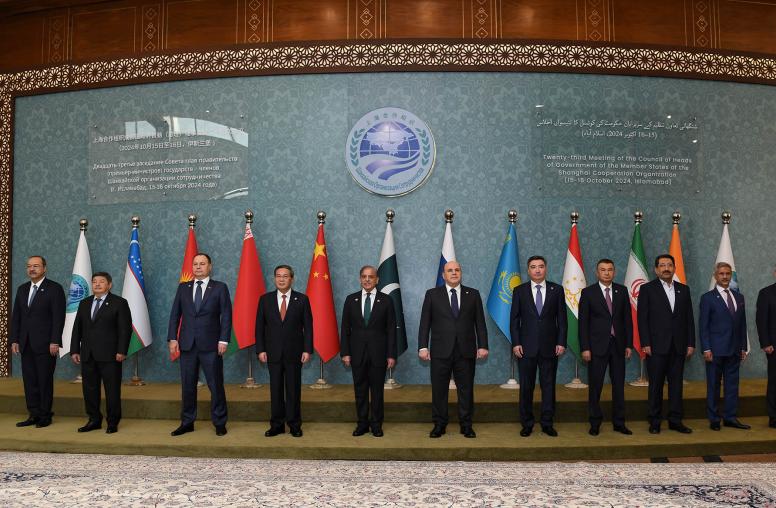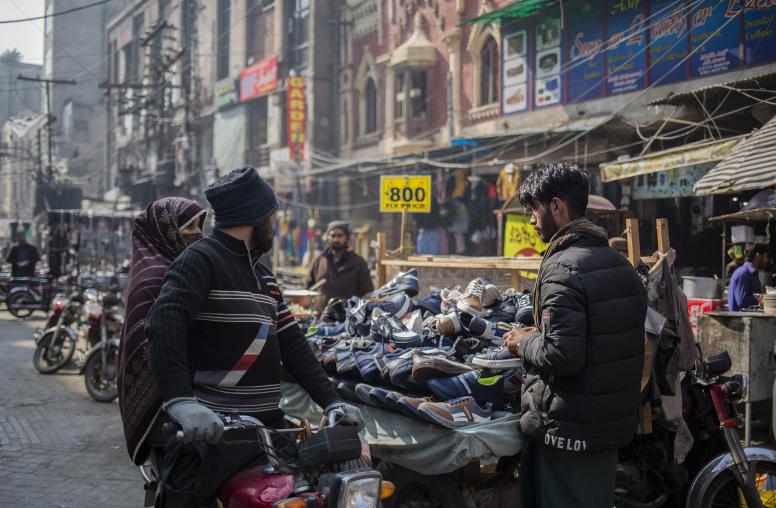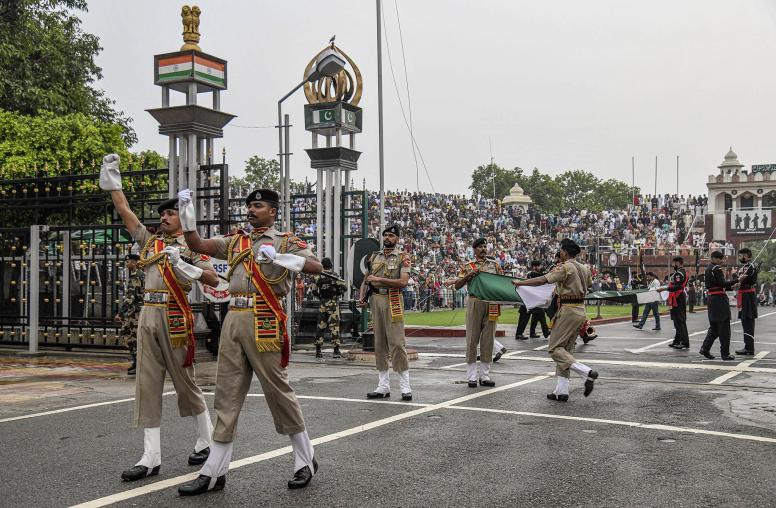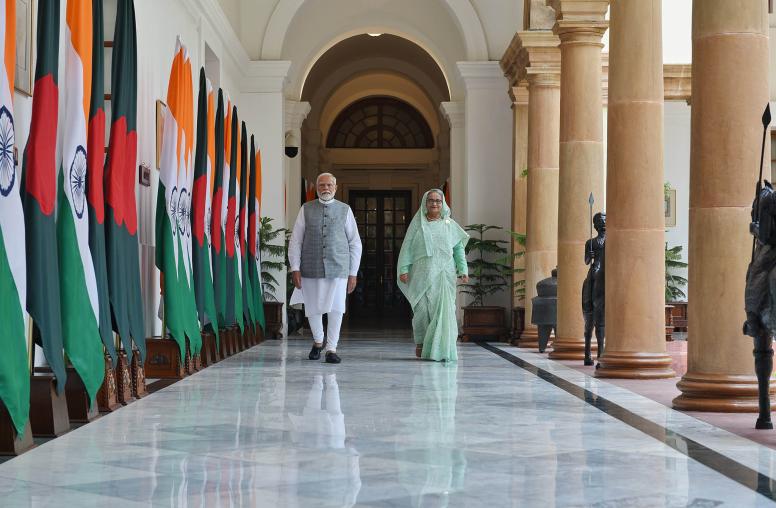Pakistan’s Militant, Nuclear Threats Mask Underlying Risk: Water
Pakistan’s water supply per capita amounts to less than half that available to the average American. Serious water shortfalls have the potential to generate conflicts within Pakistan, as well as exacerbate regional tension.

Many of the clearest risks of conflict, violence and instability around the world have received widespread media attention. But a variety of other risks and threats have been smoldering quietly. The United States Institute of Peace (USIP) is engaged in a variety of peacebuilding and conflict management efforts in many of the countries where these lesser-known risks are emerging. In a series of articles, the Institute examines some of these “sleeper risks” through the analytical lens of USIP experts. | Read more about USIP’s series on sleeper risks
 The persistent spotlight on Pakistan’s violent extremist groups, the security of its nuclear arsenal and its powder-keg tensions with neighboring India masks a more slow-growing but still potentially explosive threat – internal conflicts over water.
The persistent spotlight on Pakistan’s violent extremist groups, the security of its nuclear arsenal and its powder-keg tensions with neighboring India masks a more slow-growing but still potentially explosive threat – internal conflicts over water.
With a water supply that’s already less than half of what the average American enjoys, Pakistanis demonstrate out of frustration in cities like Karachi, “water mafias” are forming in urban centers, and provinces are arguing heatedly over dam construction and the flow of the legendary Indus River. Considering the costs of supplementing water supplies in cities or the threat to livelihoods that water shortages pose on farms in rural areas, the consequences are even more likely to hit the poor.
“The awakening is imminent,” said Raymond Gilpin, the director of the U.S. Institute of Peace’s Center for Sustainable Economies. “Pakistan is heading toward extreme water stress.” The resulting tension carries the risk of internal instability or even regional conflict, considering Pakistan’s competition with India for water, not to mention the other strains between them.
“The potentially destabilizing effects of extreme water shortfalls in Pakistan, especially in cities like Karachi which are critically important for Pakistan’s economic well-being, could pose as serious of a threat to Pakistan’s stability as extremism,” said Andrew Wilder, director of Afghanistan and Pakistan programs at the U.S. Institute of Peace (USIP).
Despite a temperate climate in the country’s northwest and monsoons that deliver 60 percent of the rainfall in Sindh and Punjab provinces, according to the United Nations Food and Agriculture Organization, Pakistan is mostly arid and relies almost entirely on the Indus River and its tributaries for water. Like elsewhere, Pakistan’s water and sanitation quandaries are heightened by population growth, urbanization, inefficient agricultural practices and poor management.
The amount of water available per capita in South Asia has fallen by 70 percent since 1950, Reuters reported in July, citing the Asian Development Bank.
The U.S. intelligence community released an assessment a year ago examining the risks to national security of water-related conflicts around the world. The report’s authors concluded that South Asia is among the regions that “will face major challenges coping with water problems.”
“During the next 10 years, many countries important to the United States will experience water problems that will increase the risk of instability and state failure, exacerbate regional tensions, and distract them from working with the United States on important policy objectives,” according to the State Department, which commissioned the Intelligence Community Assessment on Global Water Security, a joint estimate by 16 U.S. agencies. “These findings reinforce the view that water is not just a human health issue, not just an economic development or environmental issue, but a peace and security issue.”
Specialists consider an area water-stressed when the supply decreases to less than 1,700 cubic meters per person annually. When the level deteriorates to less than 1,000 cubic meters, it’s considered “water scarcity.”
The United Nations estimates Pakistan’s availability of water already has dropped to about 1,090 cubic meters available per person. By comparison, Americans have access to some 2,500 cubic meters, according to the intelligence assessment on water security.
Another report issued in November, the U.S. National Intelligence Council’s Global Trends 2030, said nearly half of the world’s population by then will live with “severe water stress.” Competition for basic resources of food, water, and energy are linked and will be exacerbated by population growth, the council said.
“Limited natural resources—such as water and arable land—in many of the same countries that will have disproportionate levels of young men—particularly in Sub-Saharan Africa, South Asia, and parts of the Middle East—increase the risk of intrastate conflict,” according to the Council. Most of these internal conflicts will play out as “irregular warfare,” but the “spread of precision weaponry may change the character of some of these conflicts.”
Interestingly, the February 2012 intelligence report on water noted that formal water treaties or other agreements have been quite durable, often surviving war. Among the examples cited is India and Pakistan’s Indus River Commission. Still, the tensions erupt regularly between the two sides over water supply and the effect of major dam projects.
“The regional divisions are important and affect the supply,” Gilpin said. “But they’re not the entire story.”
Internally, Pakistan’s governing structures may be less resistant to upheaval over water issues. In the megalopolis Karachi on the country’s Arabian coast, residents demonstrate regularly over water cutoffs and sanitation problems, said Natalie Nasrallah, an international development consultant in Alexandria, Virginia, who’s working on a USIP analysis of the links between water issues in Pakistan and conflict. The city faces severe and chronic water shortages, with some areas getting water only two hours per day.
Competition for the little water that is available among sectors of the economy – agricultural, industrial and manufacturing – exacerbates the tension. The Daily Times of Pakistan reported a protest last April after water and power had been suspended for three days in an industrial park.
Organized crime also gets a piece of the action. “Water mafias” take control of supply tankers that have become a common source of the precious resource or find ways to cut the government flow to artificially increase demand for their own sources. Last month, the managing director of the Karachi Water and Sewage Board called for authorities to penalize “the mafia” for excavating gravel and sand that covered water supply lines, creating a safety hazard, according to news reports including one on the website One Pakistan.
“Even if the political will were there, the regulatory framework is woefully dysfunctional,” Gilpin said. The multitude of laws governing water supply and distribution in Pakistan includes provisions dating to 1860. In some cases, water allocations are still based on colonial distribution that favored agriculture and privilege.
“Water rights in Pakistan are synonymous with land rights,” Nasrallah said.
Water-related decision making is based almost entirely on supply considerations and how to divide that among the various interest groups rather than a disciplined examination of demand. While civil society leaders and academics in Pakistan have expertise in the field, most officials in the country’s water sector who influence policy and strategy are engineers. The country needs more political, social, economic and environmental experts within the system to function most effectively.
“What Pakistan needs is something more reflective of the nature of water demand today and in the future,” Gilpin said.
A November 2010 USIP report called for more focus on water management, regulatory efficiency and appropriate irrigation and farming techniques rather than massive projects such as dams with price tags and environmental effects that far outweigh their benefits.
The impetus to make the necessary changes is hampered by the absence of an influential constituency for progress.
“Currently it’s affecting the poor disproportionately,” Gilpin said. “And they don’t have a voice.”
60 Second Film Festival
Check out the two films that won in the “Water” category of the USIP-supported 60 Second Film Festival in Pakistan:
Read Features in This Series
- Syria: Regional Fallout from the Civil War (January 29, 2013)
- Nuclear Nonproliferation: A Corroding International Regime (January 31, 2013)
- The Israeli-Palestinian Standoff: More Risks Emerging (February 5, 2013)
- Jordan Election Turnout Masks Risk of Shaky Economy and King’s Restive Base (February 7, 2013)
- Sudan: Economic Pressures Building (February 12, 2013)
- South Sudan: Undemocratic Tendencies on the Rise (February 14, 2013)
- Afghanistan Land Conflicts Pit Nomads Against Villagers, Power Brokers Against Each Other (February 21, 2013)



